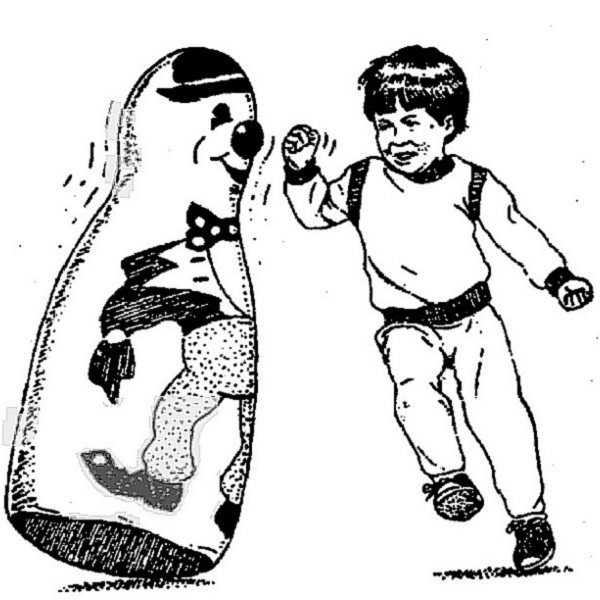L20 - Bandura
Media Effects Theory- Albert Bandura

- The idea that the media can implant ideas in the mind of the audience directly
- The idea that audiences acquire attitudes, emotional responses and new styles of conduct through modelling.
- The idea that media representations of transgressive behaviour, such as violence or physical aggression, can lead audience members to imitate forms of behaviour.
It is important to determine the effects that media products have on their audiences. Media effects theory often assumes a passive audience and focuses on the extent to which the media could be held responsible for problems in society.
Produced in the 1960s and 70s, much has changed in our understanding of audiences and the media since Bandura's 'bobo doll' experiments and 'social learning' theory. In media studies today, it is common practice to debunk bandura's research for being outdated and irrelevant.
The bobo doll
The bobo doll experiments (1961-63) focused on an adult modelling aggressive behaviour towards a self-righting doll to see whether children would imitate this behaviour.
Generally, the children would imitate the aggressive behaviour modelled to them by an adult.

"In the social learning system, new patterns of behaviour can be acquired through direct experience or by observing the behaviour of others" - Albert Bandura.
Bandura said there were two type of learning: by direct experience and through modeling.
Bandura's studies were mostly concerned with child behavioural psychology, but have been frequently applied to media effects debates.
How the theory is useful for news:
- May apply to a wide range of media products, including newspapers.
- Would most apply to newspaper messages that are delivered strongly and consistently across newspapers, eg. about the wrongness of terrorism.
- Draws the attention to the need to investigate the direct effects on individuals who consume newspapers.
- Supports the argument that newspapers should be regulated to avoid public harm.
- For online news, supports the argument that the internet should be regulated to avoid public harm, eg. to remove fake news and terrorist propaganda.
Moral Panics
In what ways do certain sections of society 'blame' media platforms and products for negative behaviour?
- Violence in video games allegedly desensitise teenagers to violence and aggressive behaviour, and therefore negatively affect their behaviour and actions in real life.
- Concerns over the effects of music lyrics on impressionable younger audience members.
- Social media platforms such as Instagram, are relatively non-regulated, meaning that people of any age (especially young) are able to view graphic or inappropriate/upsetting images or videos.
- Fake news causes widespread panic among audience members and start a butterfly effect of unnecessary actions, for example, the COVID-19 pandemic caused many people to go out and panic buy in supermarkets, and waste precious products when there was no need for this.
Write a paragraph to compare how these two newspapers position their audience and link your discussion to Bandura's media effects theory.
The i newspaper shows us a photograph with a zoom lens, of thousands of people squashed on a beach, not adhering to the COVID social distancing rules. This links to Bandura's theory as it creates the desired emotional reaction within the audience, as the chosen image used manipulates how the viewer is feeling. In the Daily Telegraph front page, there is a contrasting image that shows two people on a beach rather than a plethora;social distancing and following the rules. So, the use of camera angles by the news means they are able to manipulate how their audience feels by creating desired emotional responses to what they are viewing, whether it be anger, satisfaction, upset, fear, or calm.
By showing something that is not necessarily truth, but using image as proof, the newspapers are able to sway the opinions of the readers.
Models
It can be strongly argued that representations have a big impact on the audience consuming a media product.
'It is not uncommon for people to display strong emotional reactions towards certain things or classes of people on the basis of little or no personal contact with them.'
How the theory is limited:
- Originally developed to explain the effects of media with powerful audience positioning, such as television - newspaper representations of violence are less likely to produce imitative behaviour, because they depict the stories in such a way that manipulates their audience's reaction to it.
- Newspaper messages are likely to be contradicted by messages from politically and socially opposing newspapers, eg. the Guardian and the Mail.
- For online news, messages can be challenged by audiences in comments, tweets or other posts, reducing the effect of the original messages.
- Prioritising the effects of the media on the audience may mean that the effects of the audience on the media are underestimated.
Comments
Post a Comment